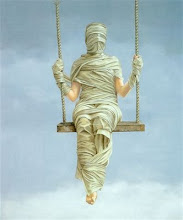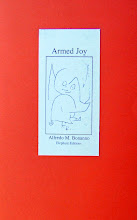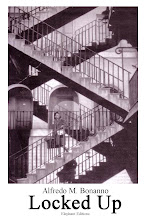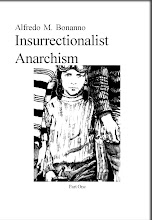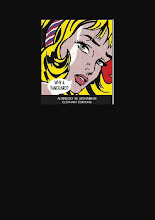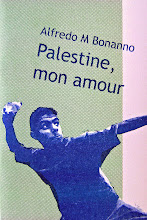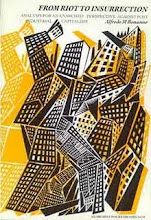Introduction
If the artistic product is a reality, reflections on the conditions that bring it about, i.e. aesthetics, should offer clarifications concerning this reality.
If class counterposition is an undeniable fact in our society, opposing structural interests push superstructural reflexes (therefore also art) to resolve themselves in terms of the reality of the base.
The position of the artist is therefore that of an intermediary between two parts in struggle. Objectively outside the two contending sides in terms of extraction, privilege and class, he can support power, so contribute to exploitation, sweetening it with his fantastic constructions, distracting the exploited from their objective situation; or struggle against it, inserting himself within the problematic of the mass, developing his role of intermediary and clarifier in such a way as to contribute to the awakening of consciousness of the exploited.
But the alternatives are not always so clear cut. Artists, like all intellectuals, are men of privilege, of “specialisation”, of “individualisation”. It is possible to distinguish at least three categories. Those who are not afraid of losing their original privileges and refuse to acquire more, putting everything behind them and building on the reality of the struggles of the exploited, the unknown of their own aesthetic experience and the “finished product” of their capacity as artists. Those who feel this need quite clearly as the only historical alternative for their work not ending up abandoned to the rats, but who lack the physical and moral strength to leave the world of privilege and the possibilities of an - immediate - future arrangement that is both ideal and profitable, so it is too hard a step for them to take. They prefer to play astutely, with two packs of cards, wearing the guise of the rebel when they realise the wind is blowing to the left, immediately taking refuge in the arms of the bourgeoisie when it changes direction. Reformism is their ideal. Well fed, doted with high-sounding academic titles (often jokingly disdained), directed with all their might towards establishing lasting contracts with the editors of power, respectful of legality, impassioned contestors when there is no danger involved, they represent the mass of manouvres that the bourgeoisie uses in its various levels of action to contrast the field of the struggles of the exploited. Finally, there are those who are openly admirers of extreme right-wing ideas, such as Celine, for example, but these are a tiny minority with no capacity for action.
Our necessarily summary typology would be enriched by a repartition concerning the first category. Among the artists who really go towards the people it is necessary to make a distinction between those who want to “educate” them, that is take their creations to the people, and those who “simply” want to work amongst the people in such a way as to determine certain objective conditions that can produce the artistic event both in the people and in the creative inspiration of the artist who works among them. This repartition is not devoid of importance in that it distinguishes the marxist operative apparatus from the libertarian one.
Art can and must maintain its prospectively creative vision, but only on condition that the elements of creativity emerge from a popular context, as making part of the “need” felt at mass level. In this direction the unknown is still to be discovered, the artist is still to identify himself, the relationship between artist and enjoyer of the artistic product is still to be built.
The main characteristics of Libertarian Aesthetics
1) Pluralism. In other words the fertile presence of various aesthetic currents. concerning this the concern about an excessive wealth of individualistic points of view, always possible at least at the beginning of the debate with the opposing world vision (libertarian communist), can be minimised by an exact vision of reality: collective work and work in common must not necessarily mean the killing of the individual, in fact, on the contrary, the exaltation of those qualities of the individual which are of a social nature to the detriment of the other characteristics that have been exalted since the end of the Middle ages and which found their maximum development at the time of the English colonial domination.
In this sense the traditional experience, even of the kind that is distorted because it is not capable of overcoming the division of labour, can find space to free itself and pass on to a new kind of experience: the libertarian one. No castrating obligation dictated by an authoritarian aesthetic Let us say recognises only realism as valid and only a certain kind of realism at that (Balzac); but autonomous research for that creative dimension which only the person in their own autonomy as an individual can reach. All this constantly linked with that plurality of experience that comes out of the collective and communitarian dimension, a dimension that intends the critical attention of the listener as the probable synthesis of all that which the individual, in his difficulty to penetrate the world could communicate either in cryptographic (useless effort directed at a few privileged) or in an idealist form (distortion of reality for the use of power).
2) A new art. Destruction of the past both in the physical (if the revolutionary event should require the destruction of the artistic production of the past we will certainly not complain about that) but more in the artistic sense. This is not so much the “elimination” of the past but a “going beyond it”, presence of the past in its truly popular manifestations and representations of those seen through present day needs and experiences in a different kind of creative context, even opposed.
An art that disappears as moral research of its own object to present itself again, fresh from the oldest experiences of the world, as moral of acting, doing, of its own acting and its own doing (of the writer) but also, and principally, the acting and doing of a people in struggle.
A new art that constitutes the essential spirit of the “rupture” with everything that schematic and fixed presents tradition regarding artistic creativity. A rupture that must be balanced on the concrete object: conflictual reality, and not transferred into an eversive universe doted with an apparently apologetic-objectual fattispecie but which is substantially idealistic-additional. The essential value of the object can only be identified in personal experience relived under the collective species, through the communitarian interpretative moment; every other visual position presents additional characteristics (past and present), which do not hide collaborationist claims with an intelligent power structure which is not obtusely linked to schemes of action of the past (fascism) but projected in a progressive vision (social democracy).
3) Art as experience. Each individual is an artist, capable of creation and capable of the fruition of this creation, an unknown world to discover, a new continent, a language which is new and old at the same time. Experience as repetition of what is read or listened to, or as research for the never heard and never written. Rupture from specialisation, division (I the artist as opposed to the other fruitor of my artistic product, the office worker, student, worker, peasant). A frantumazione which must necesarily be put into operation if one does not want the absolute elimination of communication.
We have often spoken of the need to transform art from individual event into general fact, but that must not be intended as a strange refusal of the values of the individual (strange, because in contrast with our other indications of research) on the contrary, it should be considered as an indication of danger, against the individual fatto (competitive and dispregiativo of the vincolo of the alteritè). In other word, at least in the present state of the distribution of societal values, the artist cannot do less than extrinsicate his individual strength in a form which - very often - takes on the competitive aspect and denier of alterità, trying to insert itself with a communitarian reality, trying to feel collectively its individual product can develop in a different way and parallely, concorrere in the development in the mass of a capacity to fruire the artistic product, essentially necessary for the passing to the phase of autonomous production by the mass themselves, a phase which will be possible only on the total fall of the division of labour.
Working exclusively in an individual direction, confezionando a product according to the consumerist dictates of the moment and according to requests - fairly precise - of the market, one has the result of adding energy to a system of exploitation; on the contrary, working within the collective dimension the individuality exalts of inusitati instruments perhaps difficult to comprehend for those used to the traditional pastiche dictated by the exigences of power.
skip to main |
skip to sidebar
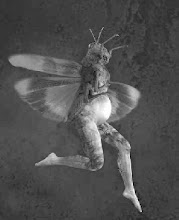
Some writings of Alfredo Maria Bonanno in English, or almost

Alfredo Bonanno was arrested on October 1st 2009 in Greece, accused of concourse in robbery. With him, anarchist comrade Christos Stratigopoulos.
Here are a few translations and part translations of a small portion of Alfredo's writing. This is a work in progress, many of the translations are as yet incomplete. Open links to find more of Alfredo's work.
Alfredo Bonnano Released
Nov. 22 Alfredo Bonnano was sentenced to 4 years imprisonment (which practically means that with the time served so far and the fact that he is over 70years old HE IS RELEASED
Christos Stratigopoulos (who took responsibility for the action)
was sentenced to 8 years and 9 months with the Greek law will probably be released at the end 2011
BY ANY MEANS NECESSARY
LINKS
click on any of these labels to read text
- "Community" sickness
- 1981 - Editorial
- A Critique of Syndicalist Methods
- A few notes on Sacco and Vanzetti
- A few notes on the revolutionary movement in Italy
- A little man in Singapore
- A million jobs
- A question of class
- Affinity
- After Marx autonomy
- Albania Laboratory of Subversion (Introduction)
- Anarchism and the national liberation struggle
- Anarchists and action
- AND WE WILL ALWAYS BE READY TO STORM THE HEAVENS AGAIN (Against amnesty)
- ANTI-INSTITUTIONAL MOVEMENT
- Are we modern?
- Armed Joy
- ARMED STRUGGLE. SOME REFLECTIONS.
- Autonomous base nuclei
- beyond syndicalism
- Beyond workerism
- But what is the imaginary?
- Class War
- Comiso - Organizational document of the self-managed leagues
- Considerations on illegality
- Dissonances (Introduction)
- Elephant Editions 1986
- Excluded and included
- Farewell to claiming
- Feral Revolution (Introduction)
- FICTITIOUS MOVEMENT AND REAL MOVEMENT
- For an Antiauthoritarian Insurrectionist International - Proposal for a debate
- From riot to insurrection
- From the centre to the periphery
- Good technology
- Guerilla Extraordinary
- Habits and idols
- Hegel
- I know who killed chief superintendent Luigi Calabresi
- Illegality
- Illness and capital
- Informal organisation
- Insurrection
- Internationalism
- Introduction to Sabate
- Introduction to Anarchism and Violence
- Introduction to Bratach Dubh English edition of Malatesta's Fra Contadini
- Introduction to Insurrectionalist Anarchism
- Introduction to Strange Victories
- Introduction to The Conquest of Bread
- Involuntary aspects of voluntary work
- Let's destroy work
- LET'S DESTROY WORK. New introduction
- Let's keep our feet on the ground please
- Lightening Conductors and Stand-ins - more shots of non-news
- Lightning Conductors and Stand-ins
- Lightning Conductors and Stand-ins (cont.)
- Locked up
- Looking forward to self-management
- Loss of language
- More on internationalism
- National Liberation Struggle
- nineteen years on
- No more crises
- Non-news about drugs
- Non-news about racism
- Ode to the Uniform
- On Feminism
- One's life on the line
- Order and chaos
- Otto Ruhle (Introductory Note)
- OUR ROLE IN THE PRESENT CONFLICT
- Palestine mon amour
- Pantagruel anarchist review
- Pinelli
- Prison and Prisoners’ Struggles - Introduction
- Propulsive Utopia
- Quality and the factory
- Restructuring Capital and the new democracy
- Revolution - Violence - Antiauthoritarianism
- REVOLUTIONARY VIOLENCE
- Science and the social revolution
- Self-management
- Severino Di Giovanni in Argentina 1923-1931 by Osvaldo Bayer
- Social banditry
- SOME NOTES -
- Space and Capital
- Stirner
- Stop the City? From information to attack
- Strategy and Methods
- Streamlined production
- The "end" of the crisis
- The aesthetics of anarchism
- The anarchist tension
- The area of autonomy and the anarchist movement in Italy
- The armed wing of science
- The Cruise missile base at Comiso can be prevented
- The ethical bank
- The insurrectional project
- THE LANGUAGE OF TECNICS -
- The logic of insurrection
- The moral split
- THE NECESSARY DESTRUCTION -
- The priority of practice
- The refusal of arms
- The revolutionary project
- The revolutionary struggle
- The significance of an insignificant event
- The struggle for self-managed social space
- The tyranny of weakness
- The whole and the part
- The young in a post industrial society
- Theory and action
- Towards anarchist antimilitarism
- TOWARDS THE GENERALISATION OF ARMED STRUGGLE
- TRANSFORMATION IN THE WORLD OF WORK AND SCHOOL -
- TRUTH -
- Unemployment in Italy - How come everything doesn't explode?
- Untitled
- Violence and non-violence
- What are anarchists
- What can we do with anti-fascism?
- Why a vanguard?
- Why Insurrection
- World domination in a few words

